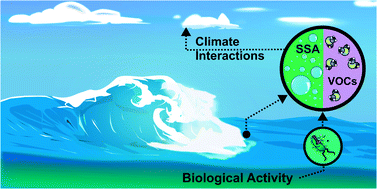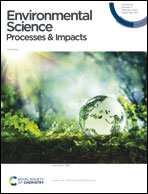The Sea Spray Chemistry and Particle Evolution study (SeaSCAPE): overview and experimental methods†
Abstract
Marine aerosols strongly influence climate through their interactions with solar radiation and clouds. However, significant questions remain regarding the influences of biological activity and seawater chemistry on the flux, chemical composition, and climate-relevant properties of marine aerosols and gases. Wave channels, a traditional tool of physical oceanography, have been adapted for large-scale ocean-atmosphere mesocosm experiments in the laboratory. These experiments enable the study of aerosols under controlled conditions which isolate the marine system from atmospheric anthropogenic and terrestrial influences. Here, we present an overview of the 2019 Sea Spray Chemistry and Particle Evolution (SeaSCAPE) study, which was conducted in an 11 800 L wave channel which was modified to facilitate atmospheric measurements. The SeaSCAPE campaign sought to determine the influence of biological activity in seawater on the production of primary sea spray aerosols, volatile organic compounds (VOCs), and secondary marine aerosols. Notably, the SeaSCAPE experiment also focused on understanding how photooxidative aging processes transform the composition of marine aerosols. In addition to a broad range of aerosol, gas, and seawater measurements, we present key results which highlight the experimental capabilities during the campaign, including the phytoplankton bloom dynamics, VOC production, and the effects of photochemical aging on aerosol production, morphology, and chemical composition. Additionally, we discuss the modifications made to the wave channel to improve aerosol production and reduce background contamination, as well as subsequent characterization experiments. The SeaSCAPE experiment provides unique insight into the connections between marine biology, atmospheric chemistry, and climate-relevant aerosol properties, and demonstrates how an ocean-atmosphere-interaction facility can be used to isolate and study reactions in the marine atmosphere in the laboratory under more controlled conditions.

- This article is part of the themed collection: Atmospheric chemistry


 Please wait while we load your content...
Please wait while we load your content...